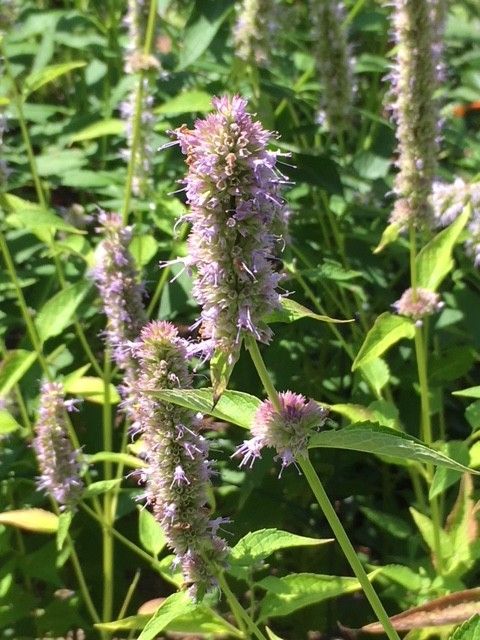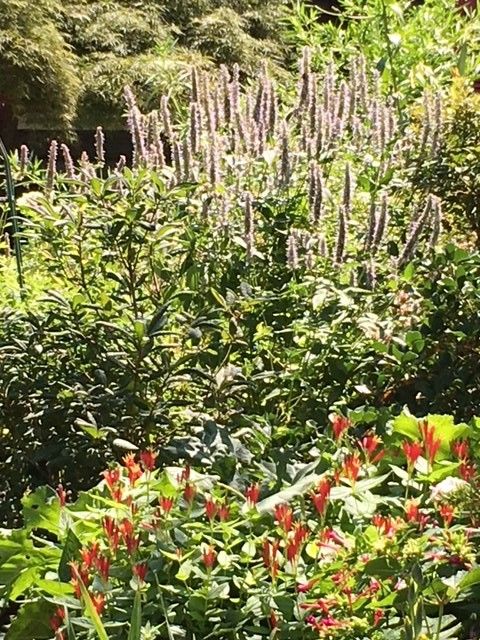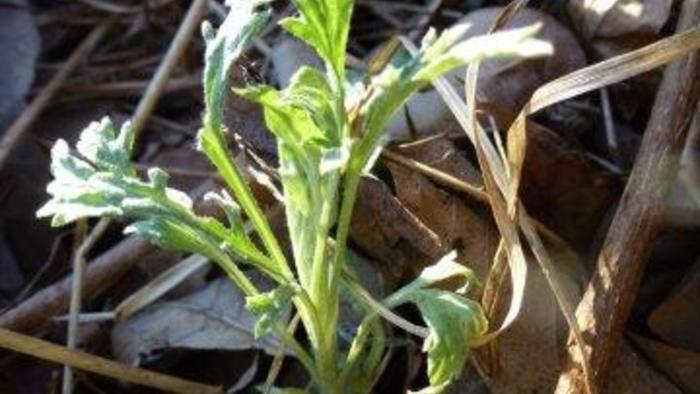
Although we are enjoying Hops, which is Herb of the Year 2018, we are gearing up for Agastache, Herb of the Year for 2019. Right now, mine and everyone’s in my zone 7 neighborhood are in full summer heights. They are surrounded all day long by pollinators from bees to hummers and butterflies. Agastache includes other herbs besides anise hyssop (some even mint scented), however I am concentrating on the anise-scented one here today.
While commonly called anise hyssop, the odor is more similar to French tarragon, though sweeter, with a hint of basil. The foliage and flowers taste similar to the aroma-sweet, with the licorice of tarragon and basil-and just a bit floral.
All of the thirty or so Agastache species are good for honey production and make great ornamental perennials. The flowering plants go well with the silver-leaved species of mountain mint (Pycnanthemum), which flower about the same time in the July garden and also provide good bee forage. The young, broad, dark green leaves of A. foeniculum, tinged purple in cool weather, are attractive with spring bulbs such as yellow daffodils.
Agastache species do not have GRAS status, even though the leaves of many species have been used for centuries as a substitute for French tarragon, infused in syrups and cordials, or brewed into tea, and the flowers have been used with fruit, in desserts and confections, and mixed in salads. Both the leaves and flowers make good additions to potpourri.
Agastache foeniculum is most often grown, though A. mexicana, A. rugosa, and A. scrophulariifolia provide similar flavors to French tarragon and basil, though may include plants scented of peppermint or pennyroyal.
Growing basics
hardy short-lived perennial, 3 to 5 feet high
hardiness to zone 4, preferring cool summers
full sun to part shade
keep moist but not wet
soil rich in organic matter, pH 7.0
Cultivation and propagation
Agastache species need little more than partly shaded to sunny, well-drained, acid- to near-neutral soil. The seeds (actually tiny nuts, or nutlets) are most easily started by broadcasting; established clumps readily reseed themselves, often in tiny nooks and crannies or the middle of the garden path. Seeds may also be sown in the greenhouse, with transplants in six to eight weeks. Clumps generally last two to three years, becoming very woody at the base and eventually dying. Since reseeding is not a problem, anise hyssop will persist in your garden yet never really become weedy; it is easy to move about. The soil should be evenly moist, well drained, slightly acid, and high in organic matter.
Harvesting and preserving
For tea, harvest leaves early in the day during a sunny, rain-free spell close to when the plants will be flowering, then dry the leaves and store them in glass jars. Anise hyssop makes an unusual vinegar for salads and a tasty cordial if you like the taste of sweet licorice. Our friend puts anise hyssop in his vodka, which he keeps in the freezer, for a preferred libation. Leaves are sometimes candied as a confection for desserts; after the egg white and sugar mixture has set and dried, store them in tightly closed containers at room temperature or in the freezer for three to six months. Flowers are often harvested fresh as edible flowers for salads, beverages, syrups, and desserts. Right now I am enjoying the flowers and leaves with peaches and nectarines and it is very good with berries.
I will be presenting a program titled “Herbs with Anise- and Fennel-Like Flavors” at the upcoming International Herb Association Conference held September 20 to 23 at the Ozark Folk Center in Mountain View, Arkansas. Other speakers will discuss the medicinal and culinary aspects, as well as the chemistry of the Agastache genus. This is a fun bunch of herbies–sign up for one or both days–and the pre- and post conference field trips are bound to be a good time (we’re headed for Baker Creek!) www.iherb.org




















Comments
Log in or create an account to post a comment.
Sign up Log in